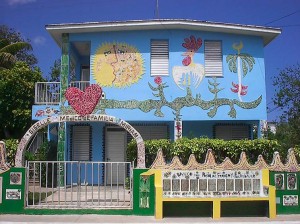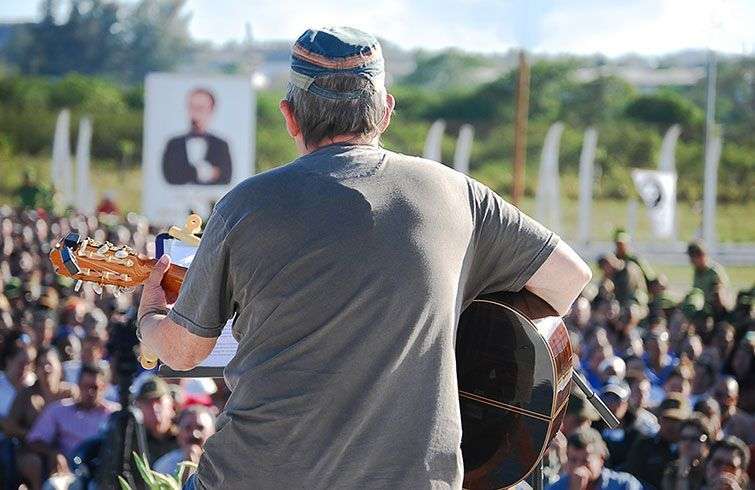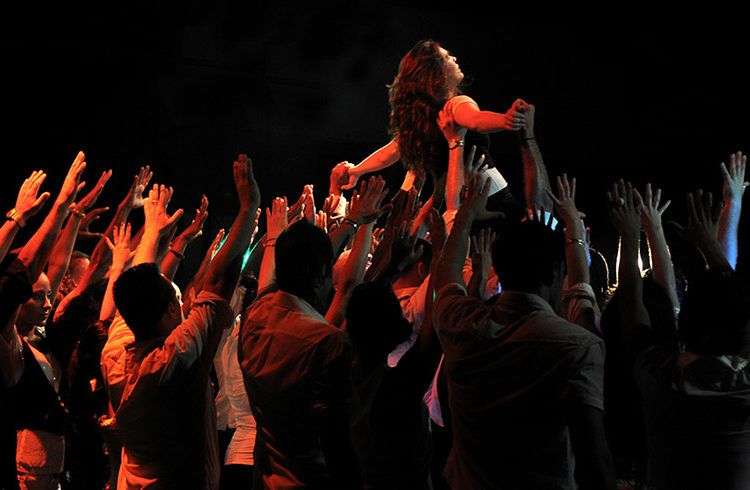Many Cuban artists have given their work a social projection that transcends their work and impact on ordinary people. Teaching art in the streets, turn their neighborhood into a gallery, take opera to the neighborhoods and repair houses for their neighbors or create studios to record discs that record labels discarded.
In most cases these social projects are financed with their own money and effort. “These are recording studios that do not pay for themselves; they are always in the red. I finance them with my trips abroad, like everything I do in Cuba, “says songwriter Silvio Rodríguez in an interview. He should also fund out of his pocket his tours through Cuban prisons, singing to inmates and doing free concerts in the most humble neighborhoods throughout the island
The artist José Fuster has turned his neighborhood, Jaimanita, into a giant art gallery in which beauty is combined with repairing the houses of his neighbors. He told OnCuba that “the project began in 1994, in the Special Period (economic crisis), and is a symbol of my optimism. They told me that it was a too expensive project but I wanted to show that my painting could pay without asking for anything from the state. “And after 20 years of work he has demonstrated that the dream was possible.
A similar project was born in Hamel Alley in the heart of Centro Habana. Salvador Gonzalez got his neighbors to surrender the walls of their homes to turn them into huge murals.

After the painting the sculptures were multiplied, the music and the dance came and Cubans began arriving from everywhere. Transcendence has been such that today, that old dirty alley, is a mandatory stopover for tourists who want to see the profound Cuba, the ordinary people, the Santeria and the rumba.
It could be an exception but the truth is that in the Paseo del Prado, the artery that divides Old Havana from Central Havana, more than 200 artists devote their time to provide people with free classes, in particular children and grandparents. Hundreds of Cubans flock from all over the capital and also from nearby provinces, bring folding benches and sit under trees to learn from painting to Asian origami through tissue bobbin lace. Cecilio Aviles directs Image 3 and explains he is happy because “the true projection of an artist is when you can positively impact another human being.”
But not all of them have been understood. The opera singer Ulises Aquino returned to Cuba chasing a dream, bringing opera to ordinary Cubans. Then he formed his own company, Opera de la Calle, and went out into neighborhoods and towns with a repertoire that included Afro-Cuban religious music, Freddy Mercury and most of the international operatic stale in one show. His success was such that they decided to open a cultural center with a restaurant to fund the musical.
The Communist Party ordered the closure of it and sent the Opera back to the street. However, Aquino does not give up, this year has made over 120 functions and recognizes that “in any other country it would have been easier but I do not know how to live without Cuba.”
None of them feels a patron, for Silvio Rodríguez is a way of life, “and I know no other way to live, Fernando, would be rare for me to live otherwise, I would not find me, I could not look myself in the mirror “.











